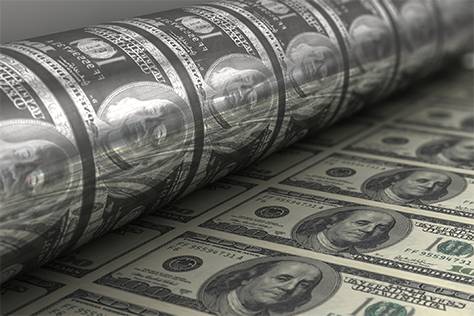The US dollar fell on Monday, remaining near multi-year lows against major currencies as traders awaited any trade-related developments ahead of the Wednesday deadline set by President Donald Trump to begin enforcing new tariffs.
Most of the United States’ trade partners are expected to face significant tariff increases once the 90-day “Liberation Day” deadline expires. Trump stated on Sunday that the new tariffs would take effect starting August 1.
The president added that his administration is close to finalizing several trade deals in the coming days and would announce later on Monday a list of around 12 countries that will receive letters detailing the new elevated tariffs.
Trump also threatened an additional 10% tariff on countries he said “align themselves with the anti-American policies of the BRICS group.”
So far, only the United Kingdom, China, and Vietnam have reached trade agreements with the Trump administration. Talks with Japan and the European Union have progressed slowly, raising market concerns that Tokyo and Brussels may fail to finalize agreements before the deadline.
Impact on Risk-Sensitive Currencies
The uncertainty surrounding the new tariffs particularly affected risk-sensitive currencies like the Australian and New Zealand dollars, as investors awaited upcoming monetary policy decisions from both countries in the next two days.
James Neviton, chief FX trader at Convera, wrote in a client note: “Market volatility seems inevitable once the deadline officially ends and the new tariff levels are announced.”
He added: “However, the impact may be more muted this time. Unlike previous announcements that surprised markets, the current proposals have been largely anticipated. Markets are also pricing in the possibility of another deadline extension.”
Currency option data suggests markets do not expect a major return of volatility ahead of the deadline, reflecting investor expectations for a potential extension.
Currency and Market Performance
The U.S. dollar held steady against the Swiss franc at 0.7959, near its July 1 low of 0.7869 — the lowest since January 2015.
The euro fell 0.3% to $1.1750.
The dollar rose 0.38% against the Japanese yen to 145.15 yen, recovering earlier losses.
The U.S. dollar index, which measures the currency against six major peers, rose 0.26% to 97.223, but remained near last week’s three-and-a-half-year low of 96.373.
This year’s decline in the dollar reflects a broader investor reassessment of its safe-haven status, especially amid rising concerns that the U.S. may not be immune to a global economic slowdown as once believed.
The British pound fell 0.3% to $1.36, still near its July 1 peak of $1.3787 — the strongest level since October 2021.
The Australian dollar dropped 0.7% to $0.6507, continuing its retreat from an eight-month high of $0.6590.
The Reserve Bank of Australia is expected to cut interest rates by a quarter-point on Tuesday amid easing inflation and uncertain economic prospects.
Tony Sycamore, a market analyst at IG, wrote in a note: “These factors, along with ongoing tariff and trade concerns, have erased any hesitation the RBA might have had about a tight labor market.”
He added that the RBA’s forward guidance is likely to “lean dovish,” leaving room for further rate cuts later this year.
The Reserve Bank of New Zealand is expected to keep rates unchanged on Wednesday, although most economists anticipate one additional quarter-point cut later in 2025.
The New Zealand dollar fell 0.7% to $0.6008.
Meanwhile, the U.S. dollar gained 0.4% against the Canadian dollar to reach 1.366 CAD and rose to 18.67 pesos against the Mexican peso.


